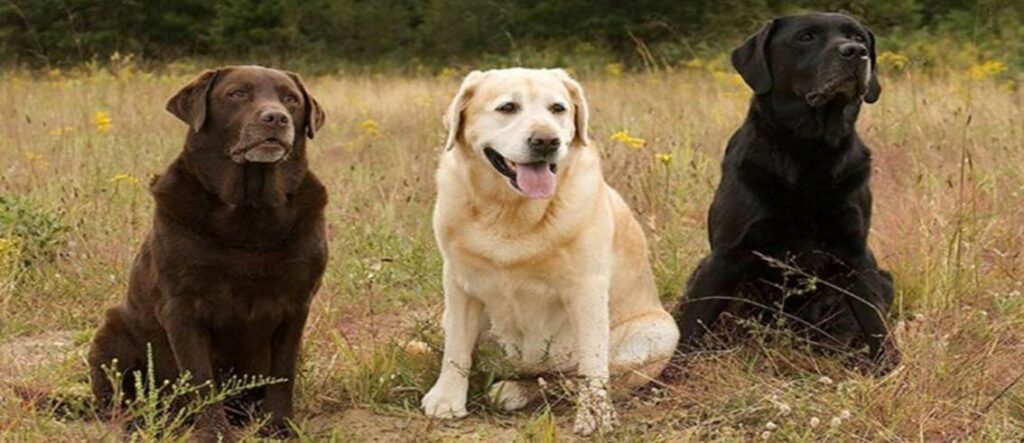Labrador Retriever: The Friendly Genius
The Labrador retriever is one of the most popular dog breeds in the world. Known for its friendly nature, intelligence, and versatility, this breed excels as a family companion, guide dog, and service dog. Its journey from the coasts of Newfoundland to global fame is a fascinating story. Let’s explore the history and origins of this remarkable breed.
Early Beginnings: Newfoundland and the St. John’s Dog
The Labrador retriever’s story begins in the 16th and 17th centuries on the island of Newfoundland, now part of Canada. European fishermen, especially from England and Portugal, travelled to Newfoundland for its rich fishing grounds. They brought working dogs to help with their daily tasks, particularly fishing. Among these dogs was the St. John’s Dog, named after Newfoundland’s capital, St. John’s.
The St. John’s Dog was a hardy, medium-sized breed with a short coat. These dogs loved water and had a natural talent for retrieving fish and pulling nets from the icy North Atlantic. They worked closely with fishermen, showing early signs of the intelligence, loyalty, and work ethic that define the Labrador retriever. Their strong swimming ability, waterproof coats, and endurance made them indispensable.
By the early 19th century, the St. John’s Dog had become a key part of Newfoundland’s fishing industry. However, the breed remained largely unknown outside this small community until British nobles discovered it.

From Newfoundland to England: The Evolution of the Breed
In the early 1800s, the second Earl of Malmesbury, an English nobleman, noticed the St. John’s Dog during his trips to Newfoundland. Impressed by their retrieving skills, he brought several dogs to England. There, he and other nobles, including the Duke of Buccleuch and the Earl of Home, began breeding programs to refine the breed.
While the St. John’s Dog thrived in England, it declined in Newfoundland. Heavy taxes on dog ownership and strict quarantine laws made it hard for fishermen to keep large numbers of dogs. As a result, the original St. John’s Dog population dwindled, while its descendants evolved into the Labrador retriever in England.
English breeders focused on enhancing the dogs’ retrieving abilities, trainability, and calm temperament. They also maintained the breed’s love for water and strong work ethic. By the mid-19th century, the breed was known as the “Labrador Dog,” likely named after the Labrador Sea near Newfoundland. Soon, the name “Labrador Retriever” became widely accepted.
Recognition and Rise to Popularity
The British Kennel Club officially recognized the Labrador retriever in 1903. Around the same time, the breed began gaining popularity in North America. The American Kennel Club (AKC) recognized it in 1917.
In the United States, hunters, families, and dog enthusiasts quickly embraced the Labrador retriever. By the mid-20th century, the breed was a common sight in hunting competitions, service roles, and homes. After World War II, its popularity soared. Families loved the breed’s versatility, gentle temperament, and intelligence.
By the 1990s, the Labrador retriever had become one of the most popular dog breeds worldwide. Its friendly nature and adaptability made it a favourite in households and working roles alike.
Modern Role and Legacy
Today, the Labrador retriever plays many roles beyond its hunting origins. It serves as a guide dog for the visually impaired, a therapy dog, a search-and-rescue dog, and a detection dog for law enforcement and military operations. The breed’s intelligence, eagerness to please, and calm demeanour make it ideal for these tasks.
The Labrador retriever’s connection to its Newfoundland roots remains strong. The breed still loves water, excels in endurance activities, and retains its retrieving instincts. Labradors thrive in dock diving, agility, and waterfowl hunting. Their adaptability and desire to work alongside humans make them one of the most beloved and versatile breeds in the world.
Conclusion
The Labrador retriever’s history is a testament to its remarkable abilities and enduring appeal. From the cold waters of Newfoundland to the estates of English nobility, the breed’s journey has been shaped by its intelligence, work ethic, and friendly nature. Today, the Labrador retriever continues to excel in various roles, from working dog to family pet. Truly, the Labrador retriever lives up to its title as the “Friendly Genius.”


